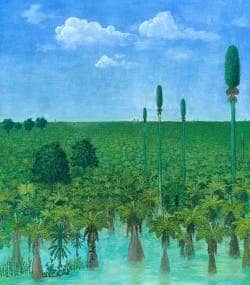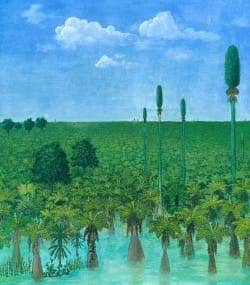
There’s some good coming off China’s extensive coal exploitation (the nation holds the top place for most pollutant emissions resulting from burning coal), as recent mining activities around Wuda in Inner Mongolia, China, has uncovered an almost perfectly preserved 298 million year-old forest. The forest, which also features intact trees with leaves, branches, trunk and cones, was buried by volcanic ash, and thus kept away from time’s unforgiving touch.
The researchers dubbed the forest the “Pompeii of the Permian period, since the manner in which it was preserved bared a striking resemblance to the famous Roman namesake event. The volcanic ash covered a large expanse of forest over the course of only a few days, ultimately sealing it away from time until present day.
The plant fossils were so well preserved, that scientists actually surprised many specimens in a falling stance, next to where they used to grow.
“It’s marvelously preserved,” says University of Pennsylvania paleobotanist Hermann Pfefferkorn.
“We can stand there and find a branch with the leaves attached, and then we find the next branch and the next branch and the next branch. And then we find the stump from the same tree. That’s really exciting.”
The researchers discovered in total a 10,763-square-foot area hidden under a coal mine using heavy industrial machinery. In all, they identified six groups of trees, some up to 80 feet high, with tree ferns forming a lower canopy. Remarkably enough, they had the good luck of finding nearly complete specimens of a group of trees called Noeggerathiales – extinct spore-bearing trees, closely related to ferns.
The ash layer was dated from around 298 million years ago, the beginning of the Permian period ( 299 to 251 million years ago). During that time, the planet’s continental plates were still coming together to form the super-continent Pangaea, and the first groups of mammals, turtles, lepidosaurs and archosaurs started to roam the Earth.
“This is the first such forest reconstruction in Asia for any time interval, it’s the first of a peat forest for this time interval and it’s the first with Noeggerathiales as a dominant group,” says Pfefferkorn. “It’s a time capsule.”
The results of their findings have been published in the journal Proceedings of the National Academy of Sciences.









